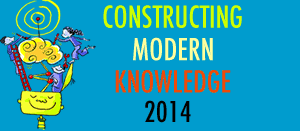This guest post below is by Helen Beattie of YATST, a fantastic Vermont-based organization that helps schools create youth/adult participatory action research teams.
Like Generation YES, YATST engages young people in leadership roles with a focus on creating models and evaluation studies to show what active youth involvement looks like. There are real gems in here for anyone looking for startup advice on creating a youth-adult partnership on any topic. One of the many noteworthy ideas - ask students AND adults about the impact of educational initiatives.
Honestly, it’s tough to convey how much support these programs need - it sounds so easy, yet it’s a profound change in attitudes and relationships. It’s also tempting to soft-sell the work required because if you make things sound difficult, people won’t try it at all. But like YATST, we here at Generation YES are doing our best to spread the gospel worldwide.
So please read on for Helen Bettie and download the study (PDF) for some great advice -
Sylvia
The “Youth and Adults Transforming Schools Together” Vermont initiative has accrued five years of experience in guiding the work of school youth-adult teams engaged in participatory action research to increase engagement in learning. The organization has evolved from the four original pilot schools to 11 member schools, ranging from one to four years of on-going commitment to this work. YATST provides the training and support to facilitate transformation spearheaded by these youth-adult teams, continually fine-tuning tools and strategies to guide this complex endeavor.
Dr. Dana Mitra conducted a comprehensive 2011-12 year-end evaluation (download PDF), assessing the following areas:
1. Fidelity to the YATST theory of change
2. Training and support for participants
3. Longitudinal understanding of the YATST group life cycle
4. Outcomes
5. Sustainability and scale
In the course of her research, Dr. Mitra and her research assistant Catharine Biddle, interviewed nine principals and 14 YATST lead teachers, reviewed over 150 documents and attended a three day summer orientation for YATST teams. She also interviewed several key staff members from the Vermont Department of Education. This research suggests that YATST is on the right path:
“”Few models of youth-adult partnership exist in the United States and of these, YATST has one of the most sophisticated visions of this work…The strengths of the YATST program include a clearly articulated theory of change, strong support for relevant skill-development that is differentiated for participating youth and adults, as well as a reflective, research driven organizational culture….The forms of technical assistance provided by YATST staff are highly sophisticated and a model nationally and beyond for how to provide support to a youth-adult partnership process. ” (p. 1-3).
While Dana focused primarily on adult perspectives of the YATST experience, Dr. Dick Corbett explored the experiences of students on YATST teams by interviewing a sampling of 18-20 team members from four different YATST schools, for each of the past two years. His report summarized:
1. How and why students joined YATST
2. The evolution of student empowerment
3. Student reflections on their impact on school change
4. Reflections on the implications of “theories of action” within YATST schools
Dr. Corbett’s conclusions were similarly encouraging:
“To say that the students had found their voices would be an understatement; the second section describes an evolution into empowerment that appeared to surpass simply being confident with sharing opinions and facilitating discussions. The students entirely expected to make a difference, especially because all of them had had firsthand experiences with provoking thought among their peers and instructors”. (p. 1)
Both reports also delve into the challenges of this work. How do we engage and sustain a truly heterogeneous mix of students in this work, reaching out to those most disenfranchised? How do we institutionalize these youth-adult teams so that they are not marginalized or vulnerable to administrative shifts or re-prioritizing? How do we document the subtle markers of change when provoking a youth-adult learning partnership paradigm shift? What can be done to sustain team commitment in the face of the sometimes “glacial” pace of school change?
-Helen Bettie, YATST

